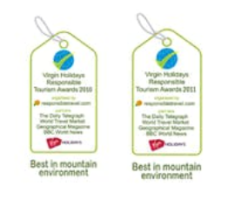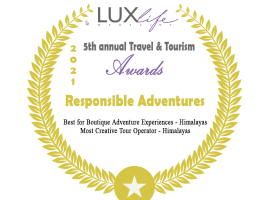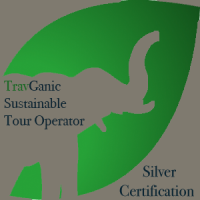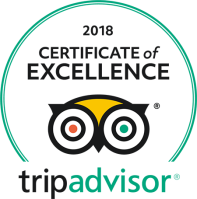Family Everest Trekking
Holiday Wellness Tour
September through May
On Request
11 Days / 12 Nights
Min. 2 / Max 16 Trekkers
Challenging
Mountain Lodges
Max 3860 Mt
Trekking Holiday for the Whole Family
On this carefully designed six-day trekking holiday in the Everest region, you and your family will have the opportunity to immerse yourselves in the beauty and rich history of the area. The journey begins with a short flight to Lukla, the gateway to the Everest valley, where your trek will commence.
As you begin your walk, you will be greeted by the awe-inspiring landscapes of one of the world’s most magnificent mountain regions. Along the trails, your children will have the chance to encounter local children and witness their way of life. To make it even more engaging for your kids, we can visit local schools, where they can interact and play together. Bringing games such as “Toss the Pigs,” UNO, or other portable games can also be a great way to entertain your children and involve local children in the fun.
Throughout the journey, you will stay in locally run tea houses, providing an authentic experience and an opportunity to support the local economy. The trek will lead you to Namche Bazaar, known as the Sherpa capital, where you can explore the vibrant markets and immerse yourselves in the local culture. Here, a rest day will provide valuable time for acclimatization, ensuring the well-being of your family as you venture into higher altitudes.
Continuing on the trail, you will reach the celebrated Thyangboche Monastery. This spiritual site offers a glimpse into the region’s religious heritage. It rewards you with incredible panoramic views of towering peaks such as Nuptse, Lhotse, Ama Dablam, and the majestic Everest. The breathtaking scenery reminds you of the natural wonders surrounding you.
Throughout the trek, your knowledgeable guide will provide insights into the Everest region’s history, culture, and natural features, enhancing your understanding and appreciation of this remarkable landscape.
This six-day trekking holiday offers a carefully crafted itinerary that combines adventure, cultural immersion, and scenic beauty. It provides a memorable experience for your family, allowing you to connect with the local community, indulge in the splendour of the mountains, and create cherished memories together.
Note: You can pre-book a seat on a direct helicopter flight from Kathmandu to Lukla and return for an additional US$500 per person each way. You will avoid the 4-5 hours drive to or from Manthali. For example – if you decide to book a helicopter seat for both ways – US$1000 extra needs to be added.




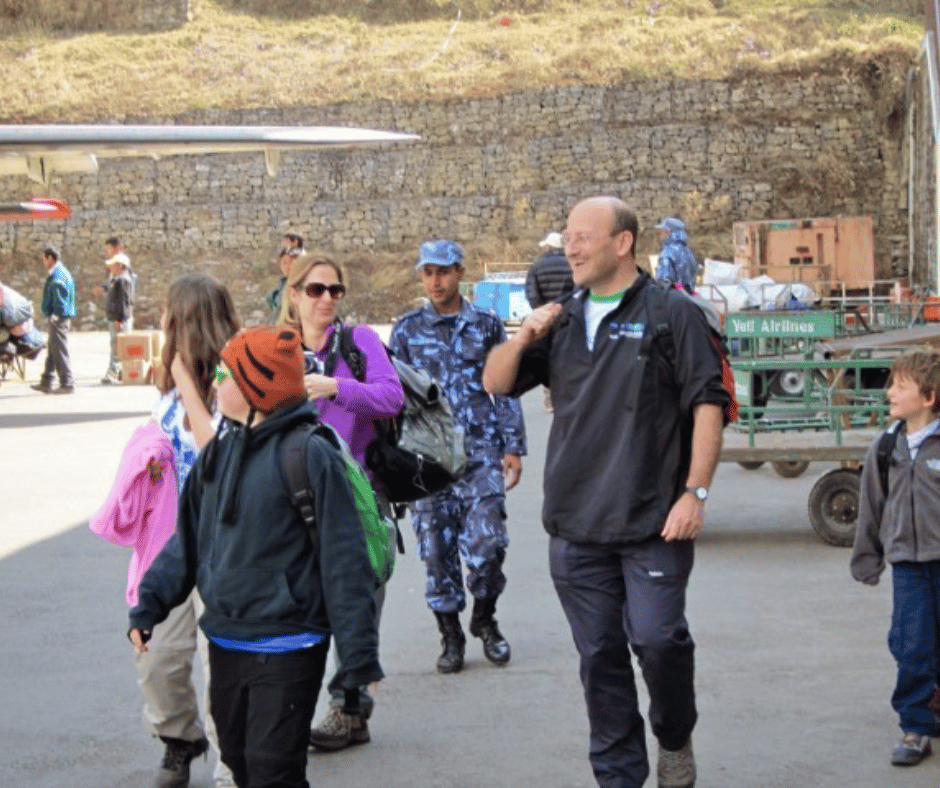
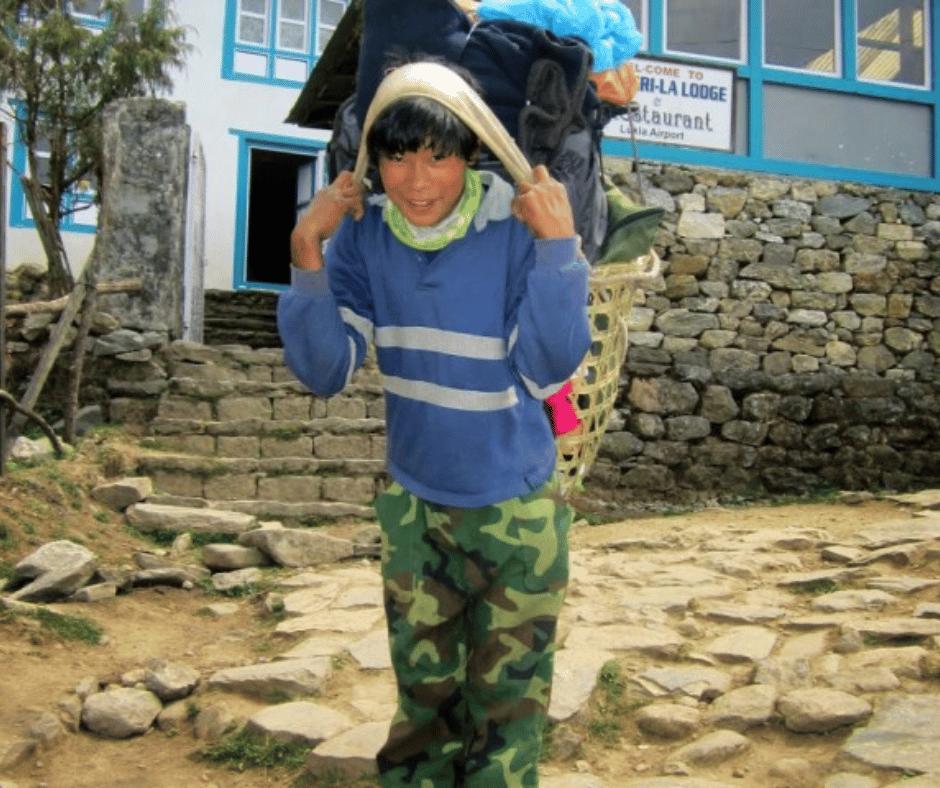
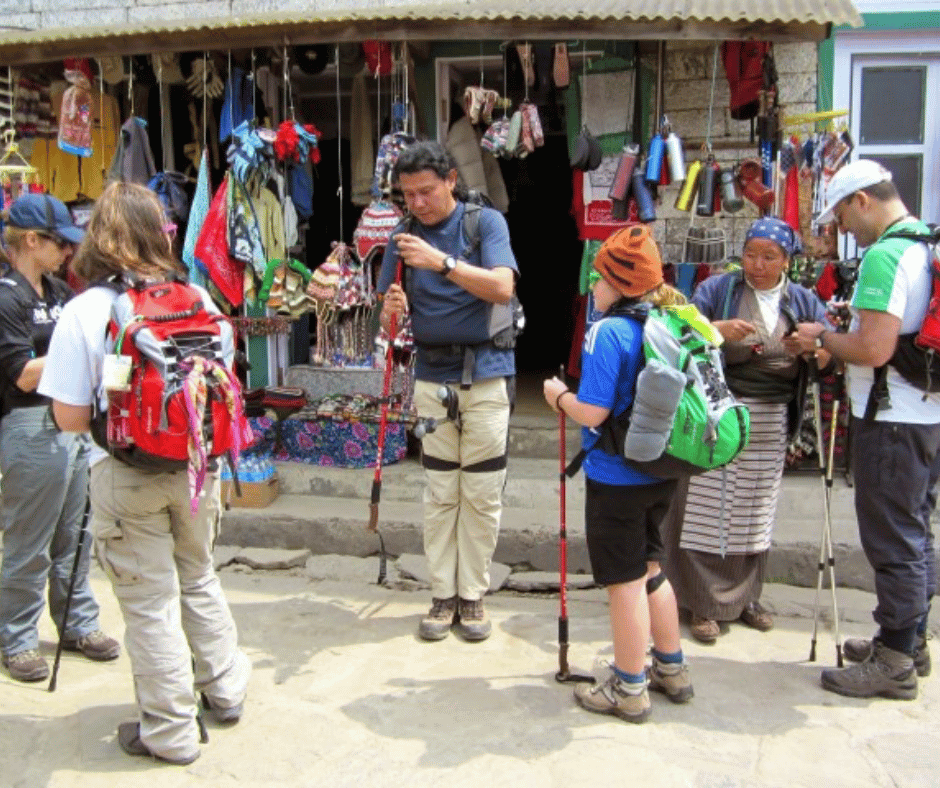
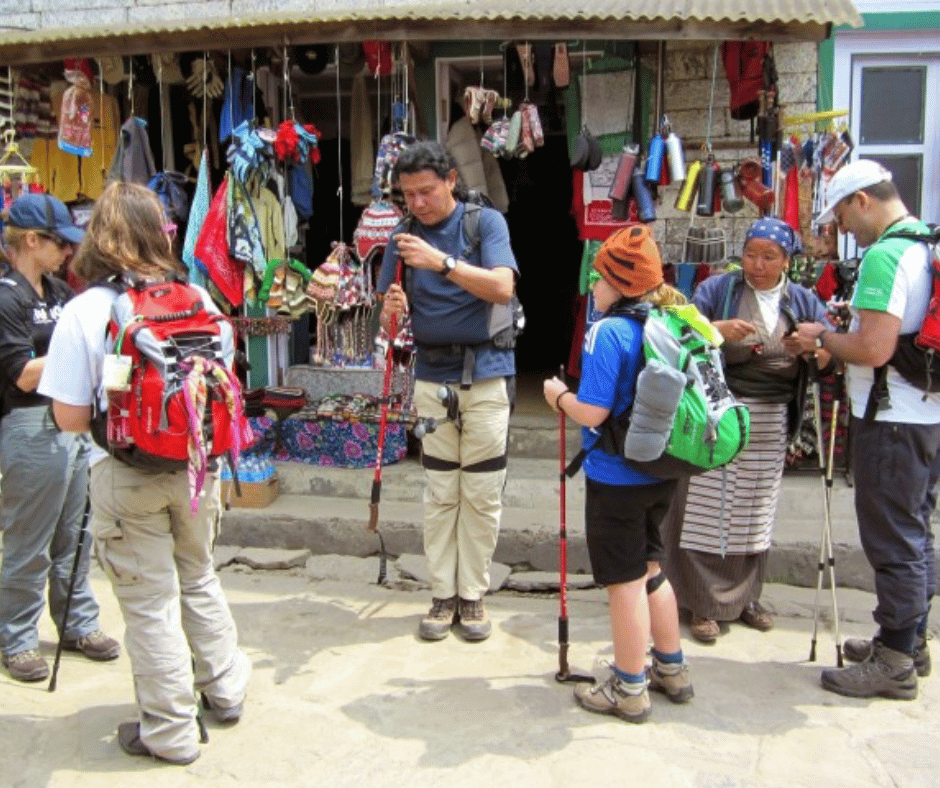
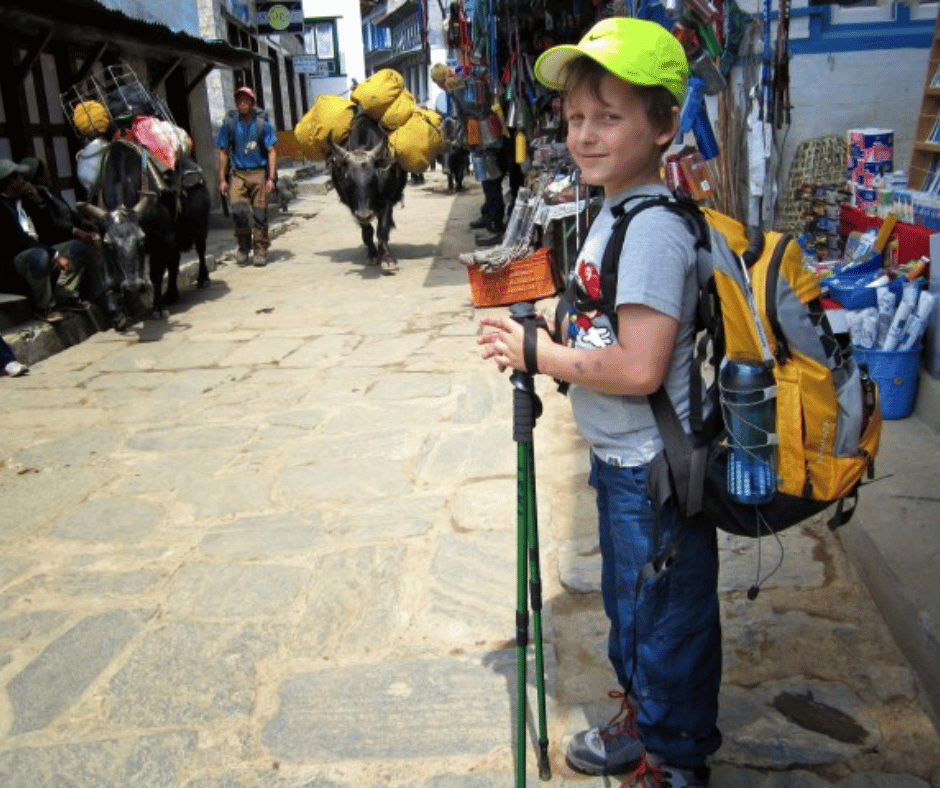
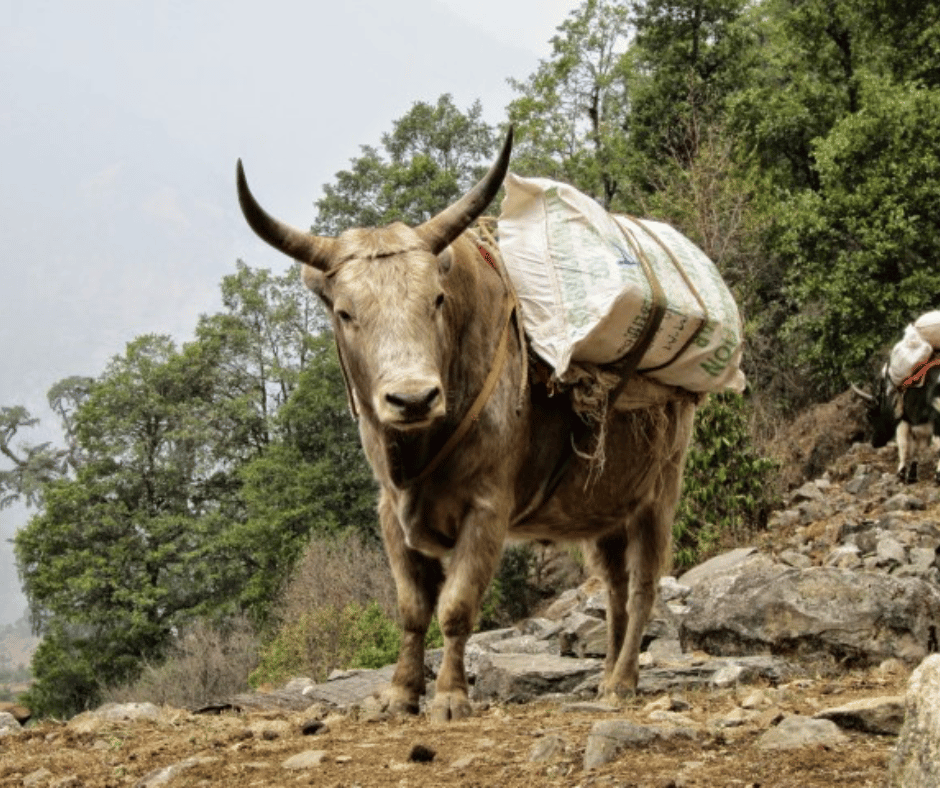
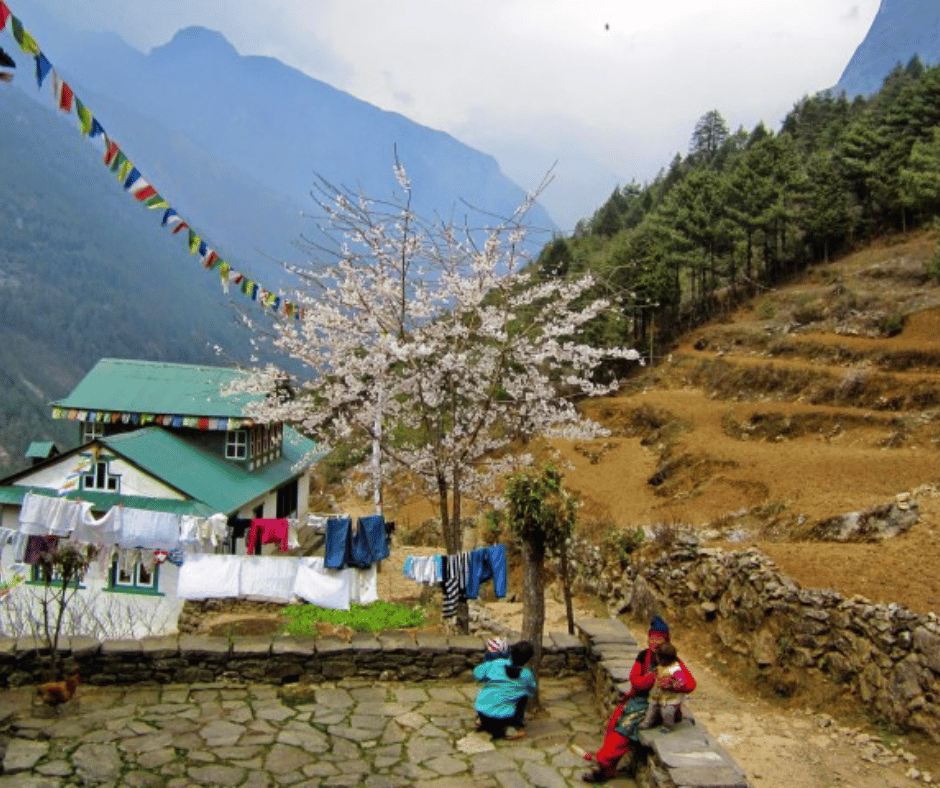
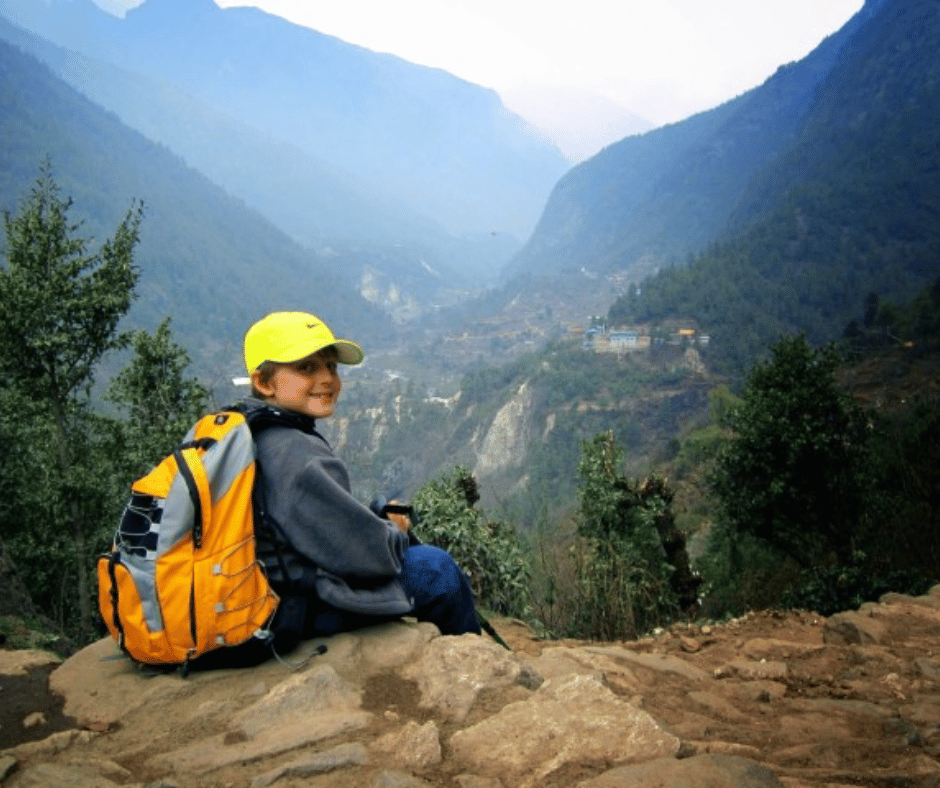
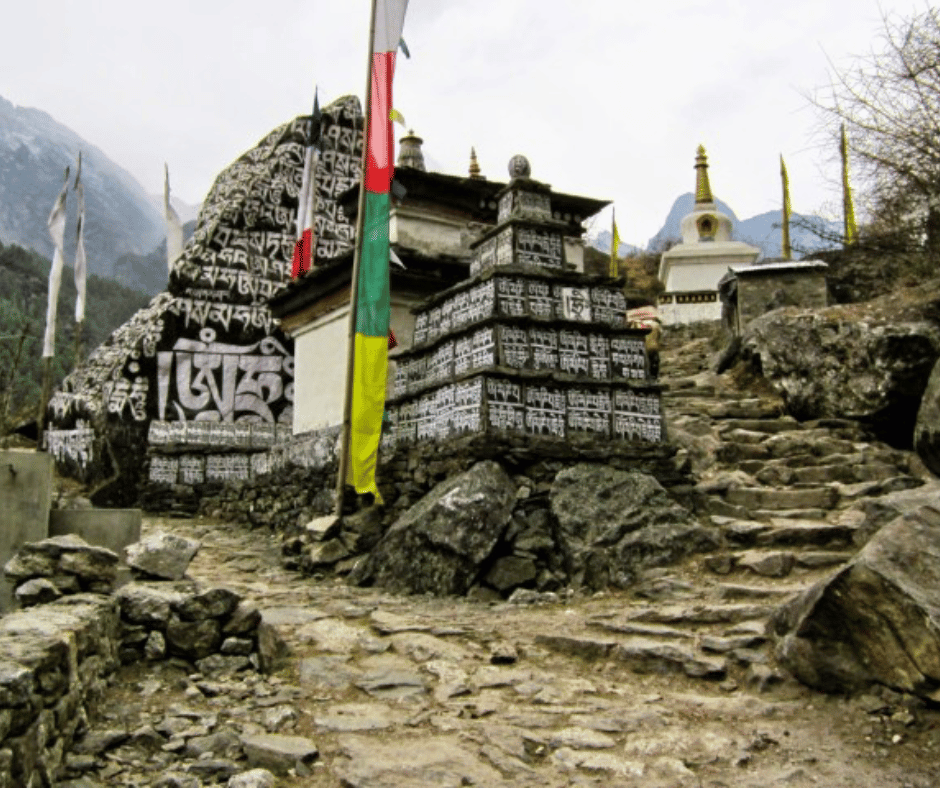
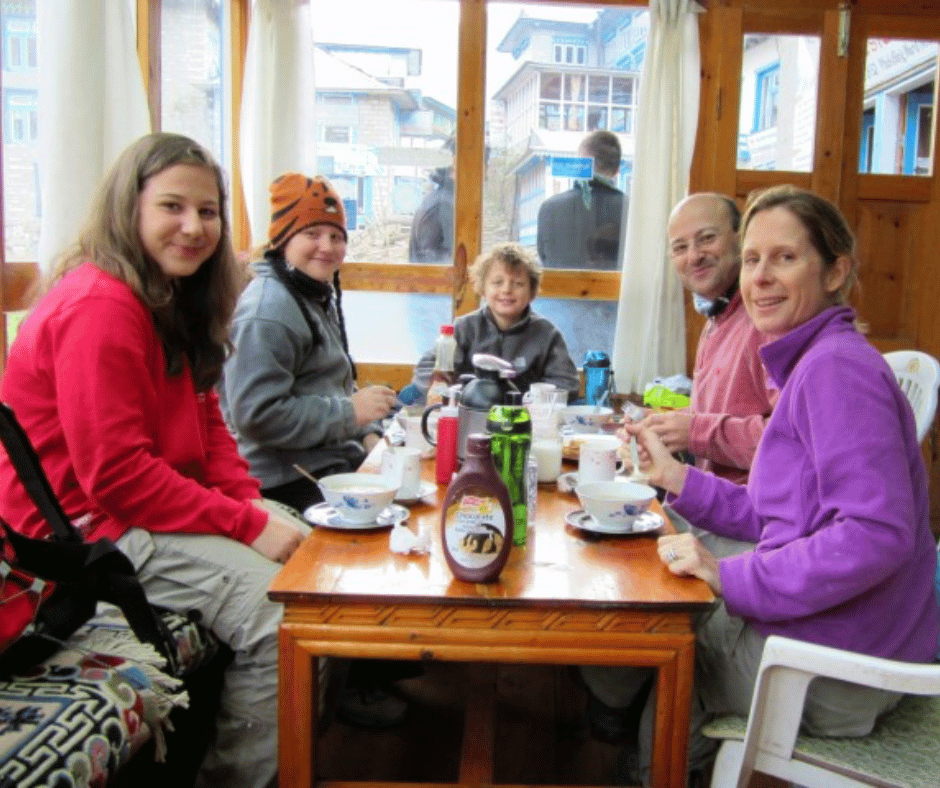
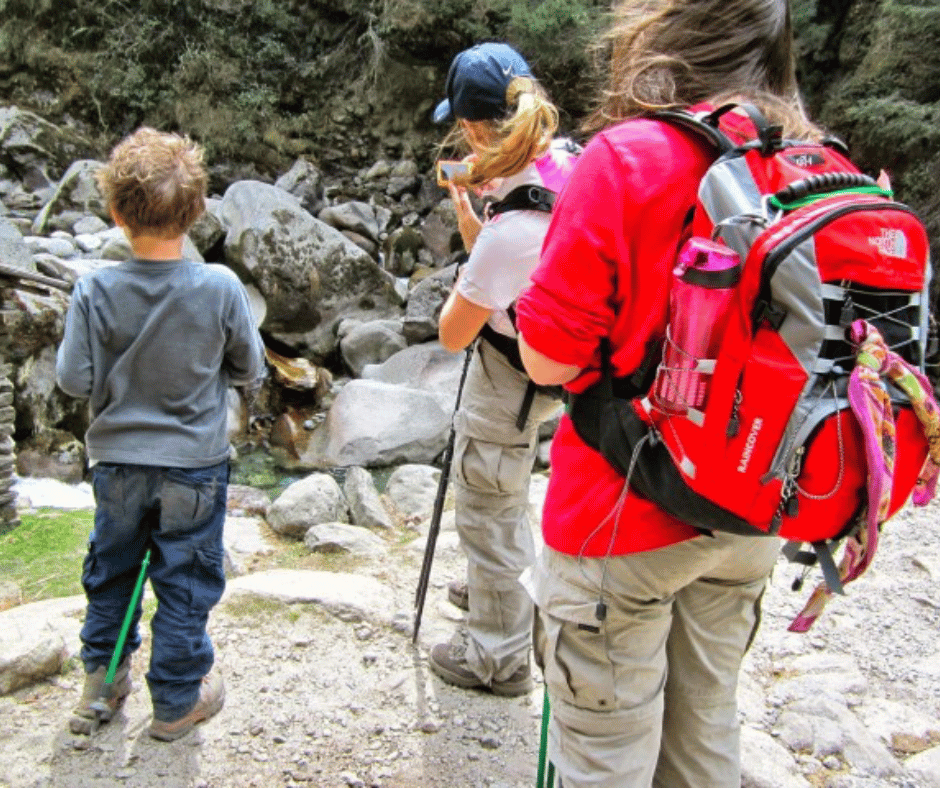
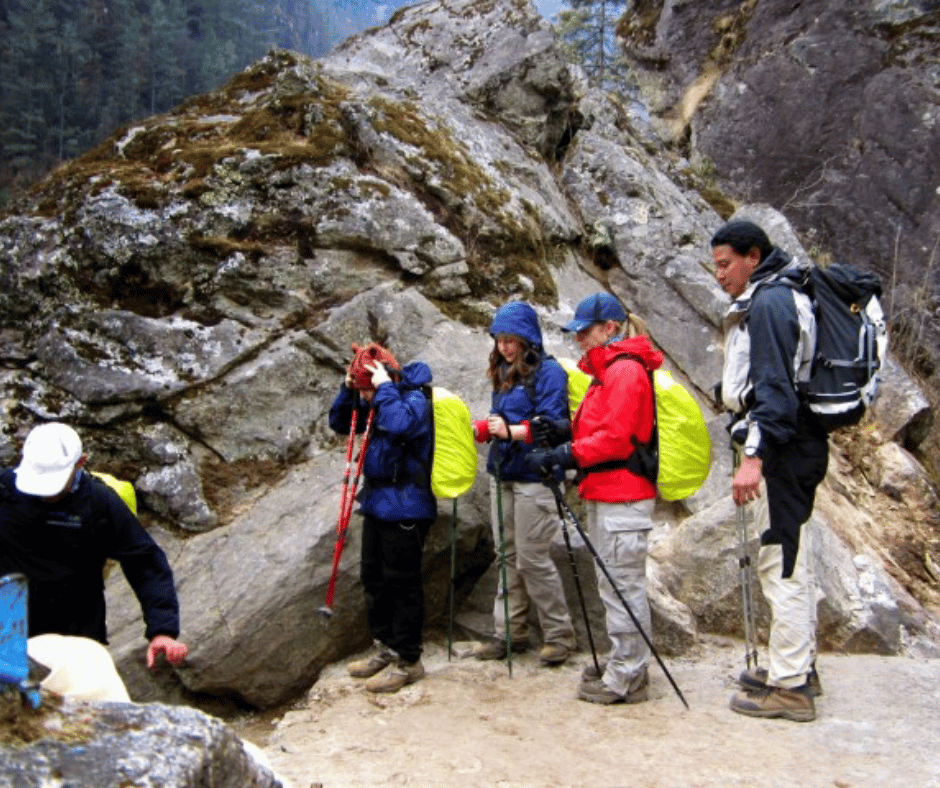




Itinerary
Upon your arrival in Nepal’s capital, Kathmandu, you will be greeted by our representative, who will be waiting for you at the airport. They will assist you with the necessary arrangements and take you on a scenic drive to Manthali, approximately 137 kilometres east of Kathmandu.
To ensure a smooth transition, booking an international flight that arrives in Kathmandu during the early afternoon is advisable. This will allow sufficient time for airport formalities, baggage collection, and meet-and-greet before heading to Manthali.
The drive from Kathmandu to Manthali usually takes 4-5 hours, depending on road conditions and traffic. Along the way, you will have the opportunity to enjoy the picturesque landscapes and get a glimpse of the rural beauty of Nepal.
Manthali is the gateway to the Everest region, where the airport for Lukla, Tenzing-Hillary Airport, is located. This airport serves as the starting point for most treks in the Everest region, including the six-day expedition you are embarking upon.
During the drive to Manthali, our representative will ensure your comfort and provide any necessary information about the upcoming adventure in the Everest region. They will be available to address any queries or concerns you may have.
Booking an international flight to Kathmandu in the early afternoon will help ensure a seamless start to your trekking holiday, allowing you to relax and prepare for the exciting journey in the Everest region.
Note: You can pre-book a seat on a direct helicopter flight at an additional $500 per person to avoid the 4-5 hours of drive to Manthali.
After flying to Lukla at an altitude of 2840m, your trek in the Everest region will commence. Your flight from Kathmandu to Lukla is typically around 30 minutes, offering a thrilling and scenic experience as you traverse the mountainous terrain.
Upon reaching Lukla, you have two options depending on your flight’s timing and the trekking pace you prefer. If your flight lands in the morning, you can aim to trek towards the village of Monjo. This trek usually takes around 5 hours to complete, and along the way, you will witness the stunning natural beauty of the Himalayas, charming local settlements, and picturesque landscapes.
Alternatively, if your flight arrives in Lukla later in the day, staying in the village of Phakding would be more convenient. The trek from Lukla to Phakding generally takes around 3 hours and introduces you to the enchanting surroundings and the warm hospitality of the local people.
Monjo and Phakding are situated at lower altitudes than Lukla, providing an opportunity for gradual acclimatization. Taking it slow at the beginning of your trek is crucial to ensuring your well-being and adapting to the changing altitude.
Regardless of the destination, the trek from Lukla to Monjo or Phakding will offer you the chance to experience the beauty of the Everest region, interact with the local communities, and enjoy the peaceful mountainscapes.
Your experienced trekking guide will lead you along the trail, provide insights into the region’s culture and nature, and ensure your safety throughout the journey.
As you continue your trek in the Everest region, you will embark on a scenic and adventurous route following the Dudh Koshi River. The journey will encompass crossing a suspension bridge on the Kyashar Khola and passing through Jorsalle, which serves as the entrance to Sagarmatha National Park.
During this leg of the trek, you can expect a mix of terrain, including flat paths, some short steep ascents, and descents. The trail will present you with varying landscapes, ranging from dense forests to open valleys, allowing you to immerse yourself in the region’s natural beauty.
After approximately one hour of trekking, you will reach a high-suspension bridge to enjoy panoramic views and capture memorable photographs. From here, a steep ascent of about 2 hours awaits you, leading you to the vibrant town of Namche Bazaar.
Namche Bazaar is a significant hub in the Everest region and a central Sherpa community trading centre. This bustling town is nestled in a natural amphitheatre and is renowned for its stunning mountain views, colourful markets, and traditional Sherpa culture.
Upon reaching Namche Bazaar, you will stay in a lodge at the top of the town. This vantage point offers breathtaking views of the surrounding peaks, including Mount Everest and Ama Dablam. The lodge will provide you with comfortable accommodation, warm hospitality, and an opportunity to unwind and relax after the challenging trek.
Namche Bazaar also presents an ideal location for acclimatization, as you will spend an extra day here to adjust to the increasing altitude. You can explore the town, visit the local markets, interact with Sherpa locals, and embark on short hikes to higher viewpoints to facilitate your acclimatization.
Overall, this leg of the trek will provide you with stunning landscapes and thrilling challenges and allow you to immerse yourself in the rich cultural heritage of the Everest region and prepare for the adventures ahead.
Rising early in Namche Bazaar presents an incredible opportunity to witness the majestic views of Mt. Everest and other surrounding peaks as the first light of the day illuminates the Himalayan landscape. The panoramic vistas from this vantage point are truly awe-inspiring and offer a glimpse into the grandeur of the world’s highest mountain.
After savouring the breathtaking mountain views, you can further indulge in the region’s cultural aspects by exploring the Sherpa Museum and cultural centre. Conveniently located within the compound where you are staying, this private museum provides a unique insight into the Sherpa community’s rich history, traditions, and way of life.
The museum exhibits artefacts, photographs, and displays highlighting the Sherpa’s mountaineering legacy, including their accomplishments on Mt. Everest. It also sheds light on the cultural heritage and religious practices of the Sherpa people.
In addition to the museum, the lodge you’re staying at is owned by a conservationist and photographer. This presents a beautiful opportunity to connect with a local who is passionate about nature and the preservation of the environment. You can engage in meaningful conversations about conservation efforts and gain valuable insights into the Everest region’s flora, fauna, and ecological significance.
Furthermore, the lodge owner’s photographic skills can be witnessed through posters and postcards depicting scenic vistas and landscapes that are available for purchase. By supporting their photography, you contribute to their conservation efforts and take home a tangible reminder of the extraordinary beauty you’ve experienced during your trek.
This unique combination of stunning mountain views, cultural exploration, and engagement with a conservationist lodge owner and photographer makes for a truly enriching and memorable experience in Namche Bazaar.
From Namche Bazaar, your next segment of the trek takes you along a broad and relatively flat path for approximately ninety minutes to the small settlement of Kyangjuma. This section of the trail offers mesmerizing views of the high peaks and deep valleys surrounding you, providing ample opportunities to pause, take photos, and admire the breathtaking vistas at your own pace.
As you continue your journey, the trail begins to descend after a refreshing tea break in Kyangjuma. The descent will lead you through picturesque landscapes until you reach the suspension bridge at Phunki Tenga. Crossing this suspension bridge adds an adventurous element to your trek and provides an exciting perspective of the surrounding natural beauty.
After crossing the bridge, the trail transforms into a challenging uphill climb for around two hours. This ascent leads you to a ridge where the famous Tengboche Monastery is perched at approximately 3,870 meters (12,694 feet). Along the way, you will find yourself amidst stunning mountain vistas and lush landscapes, reminding you of the immense beauty of the Everest region.
The Tengboche Monastery holds significant spiritual and cultural importance in the Everest region. It is the largest monastery in the area and offers a tranquil atmosphere for exploration and reflection. The monastery provides a unique opportunity to learn about Tibetan Buddhism and witness the daily rituals performed by the resident monks.
Surrounded by panoramic views of Everest, Ama Dablam, and other magnificent peaks, the Tengboche Monastery offers a surreal and spiritually enlightening experience. It serves as a testament to the deep-rooted religious heritage and the harmonious blending of natural and cultural elements in the Himalayas.
The hike from Namche Bazaar to the Tengboche Monastery encompasses diverse landscapes, challenging ascents, and rewarding views. It is a remarkable leg of the trek that not only tests your physical endurance but immerses you in the richness of the Everest region’s natural and cultural wonders.
After soaking in the spiritual and scenic beauty of the Tengboche Monastery, you will retrace your steps back to Namche Bazaar. This return journey presents an opportunity to reminisce about the incredible experiences you’ve had so far and admire the awe-inspiring views once again. As you go back, you can appreciate the familiarity of the surroundings and gain a deeper appreciation for the natural wonders surrounding Namche Bazaar.
Once you reach Namche Bazaar, you’ll have the chance to stop for a well-deserved lunch. This bustling town offers a variety of dining options where you can refuel and relax. Namche Bazaar is known for its vibrant market, where you can explore and shop for souvenirs such as handicrafts, traditional clothing, or locally made products. It’s an excellent opportunity to find souvenirs that remind you of your adventure in the Everest region.
After enjoying your lunch break and exploring the market, you’ll continue your trek towards Monjo. The trail takes you down a steep hill, leading to a high-suspension bridge. Walking across this bridge adds a sense of exhilaration and provides stunning views of the surrounding landscapes.
Once you cross the suspension bridge, you’ll arrive at Jorsalle, where the entrance to the Sagarmatha National Park is located. It’s worth taking some time to visit the park and learn about its significance in preserving the unique ecosystems and biodiversity of the Everest region. The park offers insights into this UNESCO World Heritage site’s flora, fauna, and conservation efforts.
Jorsalle will be your final stop for the day, providing a comfortable place to rest and unwind before continuing your journey. Embracing the tranquillity of the surroundings, you can reflect on your experiences and appreciate the remarkable natural wonders you have witnessed throughout the day.
Retracing your steps from Tengboche to Jorsalle allows ample time to cherish the memories, relish the incredible views once again, indulge in some shopping, and explore the natural and cultural landmarks of the Everest region.
As you embark on the final leg of your trek from Jorsalle to Lukla, it’s an excellent opportunity to reflect on your journey and the transformation it has brought. Recall your thoughts and emotions at the beginning of the trek and compare them to the present moment.
At the start of your trek, you may feel excitement, anticipation, and perhaps a hint of nervousness. The rugged yet captivating landscapes, the awaited challenges, and the unknown experiences were all part of the initial thoughts that filled your mind. You might have wondered about the physical demands of the trek and the potential difficulties you may encounter along the way.
As you approach the end of your trek, take a moment to appreciate the personal growth, resilience, and sense of accomplishment you’ve cultivated throughout the journey. Remember the breathtaking vistas, the camaraderie with fellow trekkers and support crew, and the moments of solitude and introspection amidst nature’s grandeur. Consider the physical challenges you’ve overcome, the lessons learned, and the bonds forged during this adventure.
Arriving in Lukla marks the completion of your trek and a significant milestone. It’s a time to celebrate and express gratitude to the exceptional support crew who have been there every step of the way, ensuring your safety and comfort. Enjoy the last night of your adventure by organizing a well-deserved party to celebrate the successful completion of your trek. It’s a chance to unwind, share stories and laughter, and create lasting memories with your trekking companions and the support team who have played an integral role in making this journey possible.
As you spend the final night in a comfortable lodge in Lukla, take a moment to appreciate the incredible experiences you’ve had, the personal growth you’ve achieved, and the natural wonders you’ve witnessed along the way. The trek from Jorsalle to Lukla symbolizes the culmination of an extraordinary journey, leaving you with memories and a sense of fulfilment that will stay with you for a lifetime.
You will board a flight to Manthali in the morning. The flight offers a remarkable aerial view of the Himalayan landscapes, allowing you to soak in the beauty one last time before bidding farewell to the Everest region.
After landing in Manthali, you will embark on a scenic 4-hour drive back to Kathmandu. The drive allows you to relax, reflect upon your trekking adventure, and enjoy the changing landscapes as you return to the bustling capital city.
Once you arrive in Kathmandu, you will have the afternoon free to unwind and chill out after your exhilarating journey. You can take this time to relax at your accommodation, rejuvenate your body and mind, and relish in the memories of the trek.
If you’re in the mood for souvenir hunting, Kathmandu offers many options. The city is known for its vibrant markets and shops, where you can find various handicrafts, artefacts, clothing, and other unique local products. Thamel, in particular, is a popular area for souvenir shopping, with its countless shops and stalls offering a variety of items. Exploring these markets allows you to bring back a piece of Nepal’s rich culture and craftsmanship as a memento of your adventure.
Whether you choose to chill out or indulge in souvenir hunting, please take this opportunity to savour the remaining moments of your trip and relish the vibrant energy of Kathmandu, its diverse culture, and warm hospitality.
Note: You pre-book a seat on a direct helicopter flight to Kathmandu for an additional $500 and avoid a 4-5 hour drive from Manthali.
The sightseeing tour of Kathmandu begins with a visit to Kathmandu Durbar Square, formerly known as Palace Square. This historic square, designated as a UNESCO World Heritage Site, is in the city’s heart. It served as the royal palace of the Malla and Shah Kings in the past, and today, it is adorned with magnificent palaces, temples, and courtyards. As you explore the square, you will be captivated by the stunning architecture that showcases a blend of Hindu and Buddhist influences. The intricately carved wooden buildings, the Hanuman Dhoka Palace, Kumari Chowk (a residence of the living goddess), and the beautiful Taleju Temple are some notable attractions within the square. Walking through Kathmandu Durbar Square offers a mesmerizing glimpse into Nepal’s royal history’s grandeur and architectural brilliance.
Next, you will proceed to Swayambhunath, an iconic and sacred Buddhist site perched atop a hill overlooking the city and often referred to as the “Monkey Temple,” Swayambhunath offers spiritual significance and breathtaking panoramic views of the Kathmandu Valley. You will encounter various shrines, temples, and statues as you go up the stairway to the main stupa. The central stupa itself is adorned with colourful prayer flags and features the famous “All-Seeing Eyes” of Buddha painted on its spire. At the top, take a moment to absorb the serene atmosphere, spin the prayer wheels, and immerse yourself in the peaceful ambience of the site. From here, you can also admire the sweeping vistas of Kathmandu city.
Visiting Kathmandu Durbar Square and Swayambhunath allows you to dive into Nepal’s rich cultural and religious heritage. From the architectural wonders and royal history of the former palace square to the spiritual ambience and panoramic views at the hilltop Swayambhunath, these sites offer a profound experience and a deeper understanding of Kathmandu’s identity and heritage.
You will be brought to the airport 3 hours before your flight time.
Inclusions
- Boutique hotel in Kathmandu on a bed-and-breakfast basis
- All transportation
- Complimentary T-shirt
- One assistant guide between 4 trekkers
- One porter between two trekkers
- Food for porters & crew members (we are one of the few trekking companies that provide this facility)
- All permits
- All meals on the trek (the healthiest and most varied trekking meals in the whole of the Himalayas)
- Hotel/lodges on a twin-sharing basis
- Responsible Adventures’ expert trek leader or Trek with Raj
- Use of trekking kit bag during the trek
- Trekking Chef
- Suitable clothing for porters and crew
- Insurance for crew and porters
- Twin sharing room on the trek
- Domestic airfare
Exclusions
- International airport taxes
- Visas
- All optional additional tours or activities during free time
- Transportation outside of the tour program
- Travel insurance (compulsory to have insurance that covers helicopter evacuation)
- Tips (suggested amount US$75 per week for staff only); Leader’s tips at your discretion
- Items of a personal nature, e.g., alcoholic drinks, bottled beverages, laundry, souvenirs, etc.


